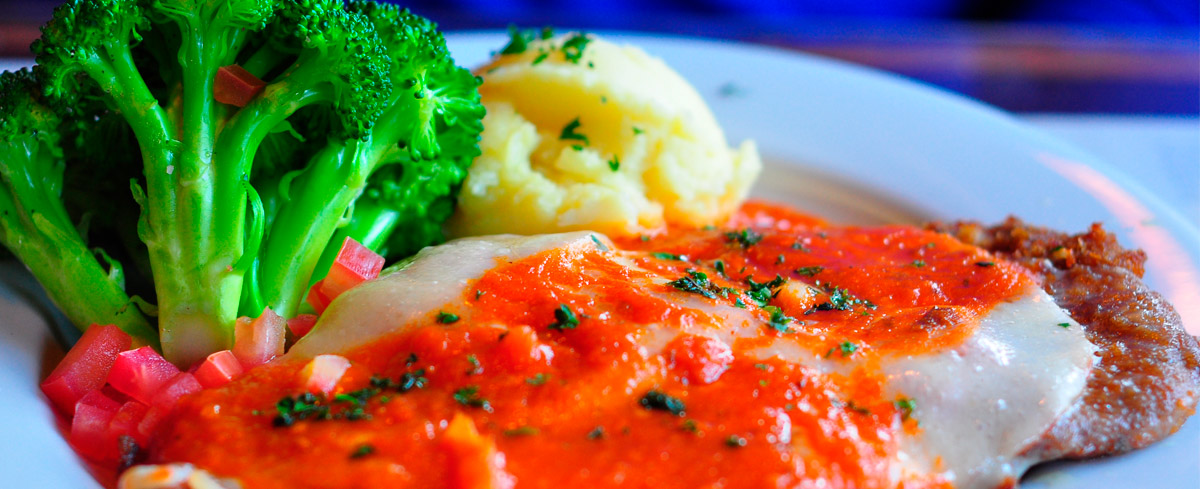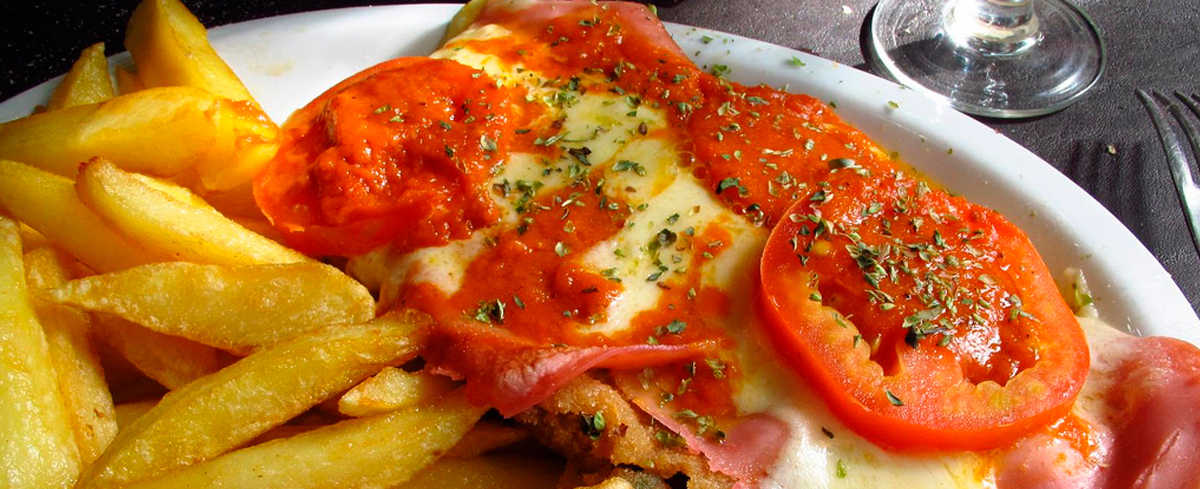6 types of Porteño milanesas
The many versions of Argentina’s favourite dish to try in the capital.
Breaded “Milanesa” escalopes are the trademark of family dinner tables in Buenos Aires. Whether baked or fried, they’re most often made from veal or chicken, but vegetarian aubergine or soya versions have also become popular, and while they’re most commonly accompanied by fries or potato puree, salad also works well. This dish arrived in Argentina with the great wave of Italian immigration to the city at the start of the 20th century and it became a staple of local cuisine. Although many of us eat it at least once a week, we never tire of it, perhaps because there are so many ways to enjoy it. Here are six of the most popular varieties of milanesa to try during your stay.
1. La napolitana
On top:
Ham.
Cheese.
Tomato sauce.
Oregano.
Tip:
The cheese should be melted!.
The most Posteño of all milanesas, this dish might appear to be named after the Italian city of Naples, but it actually takes its name from an old Buenos Aires restaurant called Napoli where it was first served in the 1940s - initially as the result of the chef burning a milanesa and trying to cover it up by putting ham, cheese and tomato on top! What began as a mistake was a hit with diners and became a mainstay of restaurants throughout Buenos Aires.
2. On horseback
On top:
Two fried eggs and salt.
Tip:
Prick one of the eggs and season the milanesa.
So where’s the horse? Well, this one is a little conceptual, the two fried eggs “riding” the milanesa. Whether the milanesa a caballo started the trend, we don’t know, but the idea of topping an existing dish with a fried egg has become popular on menus around the world, from pizzas to soups. This is a protein-rich dish to enjoy before doing very little for the rest of the day!
3. Swiss milanesa
On top:
White sauce.
Parmesan cheese.
Tip:
Mix grated parmesan into a bechamel-like white sauce before spreading over the milanesa. Chicken works best for this variety of milanesa.
Did you know that Argentina has the largest Swiss community in Latin America? Well, that was a good enough reason to pay tribute by giving them their own milanesa. Go for chicken with this one.
4. Stuffed milanesas
Inside:
Cheese.
Ham
Onion.
Egg
Tip:
It’s best to opt for a very fine cut of meat for this one so that it doesn’t crumble.
There’s a whole sub-genre of stuffed milanesas in which the possibilities are endless, but these are the classic fillings. This time, as opposed to the napolitana in which the ingredients are piled on top, they’re placed inside before coating the milanesa in breadcrumbs. Cutting one of these open to see the melted cheese ooze out is enough to make our mouths water.
5. “De la casa”
Method:
The closely guarded secret of each restaurant.
Tip:
Don’t be afraid of the unknown!
If you visit the city’s bodegones (casual family neighbourhood restaurants well worth visiting), you’re very likely to come across the famous milanesa de la casa on the menu. Every restaurant has its own “house” milanesa and they can vary greatly. We recommend trying these faithful representations of each chef’s own culinary verve..
6. Milanesa “Sanguche”
Ingredients:
Lettuce.
Tomato
Onion
Ham
Cheese
Egg
Tip:
Add “salsa golf” (a mix of mayonnaise and tomato ketchup).
The milanesa sandwich, or “sanguche” is a classic at takeaway kiosks and street food stands. You’ll probably be asked if you want it “completo?” (complete), in which case you should answer, “sí, por favor!” to receive a sandwich loaded with most if not all of the ingredients listed above. You can also often add dressings such as the famous local criolla or chimichurri sauces. Don’t be surprised if the milanesa is much bigger than the bread that it’s sandwiched in!

